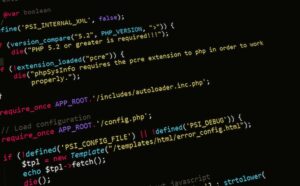-
Table of Contents
– AI is Taking Us to the Final Frontier.
Introduction
The potential of Artificial Intelligence (AI) in space exploration is immense. AI has the potential to revolutionize the way we explore and interact with space, from mission planning to Mars colonization. AI can be used to automate mundane tasks, such as mission planning and data analysis, freeing up human resources for more complex tasks. AI can also be used to autonomously control spacecraft, allowing for more efficient and cost-effective exploration. AI can even be used to help colonize Mars, by automating the construction of habitats and other infrastructure. AI is a powerful tool that can help us explore and colonize space in ways that were previously impossible.
Exploring the Potential of AI for Space Exploration
Space exploration has been a source of fascination for centuries, and with the advent of artificial intelligence (AI), the possibilities for space exploration have become even more exciting. AI has the potential to revolutionize the way we explore space, from helping us to better understand the universe to enabling us to explore distant planets and galaxies.
AI can be used to analyze data from space missions, helping us to better understand the universe and its many mysteries. AI can be used to identify patterns in data that would otherwise be too complex for humans to detect. For example, AI can be used to analyze data from the Hubble Space Telescope to identify distant galaxies and stars. AI can also be used to analyze data from planetary probes, helping us to better understand the composition of planets and moons.
AI can also be used to help us explore distant planets and galaxies. AI can be used to autonomously control spacecraft, allowing them to navigate through space without human intervention. AI can also be used to analyze data from planetary probes, helping us to identify potential landing sites and other features of interest.
AI can also be used to help us better understand the environment of space. AI can be used to analyze data from satellites, helping us to better understand the composition of the atmosphere and the effects of space weather. AI can also be used to analyze data from planetary probes, helping us to better understand the composition of planets and moons.
AI has the potential to revolutionize the way we explore space, from helping us to better understand the universe to enabling us to explore distant planets and galaxies. AI can help us to better understand the environment of space, and can help us to identify potential landing sites and other features of interest. AI can also be used to autonomously control spacecraft, allowing them to navigate through space without human intervention. With the help of AI, the possibilities for space exploration are endless.
The Role of AI in Autonomous Spacecraft Navigation
Autonomous spacecraft navigation is a complex and challenging task, and Artificial Intelligence (AI) is playing an increasingly important role in making it possible. AI is being used to help spacecraft navigate their way through space, allowing them to explore new areas and complete missions without the need for human intervention.
AI can be used to help spacecraft identify and avoid obstacles, such as asteroids and other debris. AI can also be used to help spacecraft identify and track targets, such as planets and other celestial bodies. AI can also be used to help spacecraft make decisions about their trajectory and speed, allowing them to reach their destination more quickly and efficiently.
AI can also be used to help spacecraft detect and respond to unexpected events, such as solar flares or other space weather events. AI can also be used to help spacecraft identify and respond to potential threats, such as other spacecraft or debris. AI can also be used to help spacecraft identify and respond to potential opportunities, such as new sources of energy or resources.
AI can also be used to help spacecraft identify and respond to changes in their environment, such as changes in temperature or pressure. AI can also be used to help spacecraft identify and respond to changes in their mission objectives, such as changes in the destination or the type of mission.
Overall, AI is playing an increasingly important role in helping spacecraft navigate their way through space. AI can help spacecraft identify and respond to obstacles, targets, and other events, allowing them to complete their missions more quickly and efficiently. AI can also help spacecraft identify and respond to potential threats and opportunities, allowing them to make the most of their mission.
AI-Powered Space Robotics: Challenges and Opportunities
AI-powered space robotics is an exciting and rapidly growing field that offers a wealth of opportunities for exploration and discovery. As robots become increasingly sophisticated, they are being used to explore the depths of space, providing us with invaluable data and insights. However, this technology also presents a number of challenges that must be addressed in order to ensure its successful implementation.
One of the primary challenges of AI-powered space robotics is the need for reliable communication between the robot and its human operators. In order to effectively explore and collect data from space, the robot must be able to communicate with its operators in real-time. This requires a reliable and secure connection that can withstand the rigors of space travel. Additionally, the robot must be able to process and interpret the data it collects in order to make decisions and take action.
Another challenge is the need for robust and reliable hardware. Space robots must be able to withstand the extreme temperatures, radiation, and other environmental conditions of space. This requires robust and reliable hardware that can withstand the rigors of space travel. Additionally, the robot must be able to process and interpret the data it collects in order to make decisions and take action.
Finally, AI-powered space robotics must be able to operate autonomously. This requires the robot to be able to make decisions and take action without direct human input. This requires sophisticated AI algorithms that can interpret data and make decisions in real-time.
Despite these challenges, AI-powered space robotics offers a wealth of opportunities for exploration and discovery. By leveraging the power of AI, robots can explore the depths of space and provide us with invaluable data and insights. Additionally, AI-powered space robotics can be used to perform tasks that are too dangerous or difficult for humans, such as repairing satellites or exploring hazardous environments.
In conclusion, AI-powered space robotics presents a number of challenges that must be addressed in order to ensure its successful implementation. However, it also offers a wealth of opportunities for exploration and discovery. By leveraging the power of AI, robots can explore the depths of space and provide us with invaluable data and insights.
AI-Driven Spacecraft Design and Manufacturing
Space exploration is an exciting and rapidly evolving field, and AI-driven spacecraft design and manufacturing is at the forefront of this revolution. AI-driven spacecraft design and manufacturing is a process that uses artificial intelligence (AI) to create and build spacecraft. This process is revolutionizing the way spacecraft are designed and manufactured, making them more efficient, reliable, and cost-effective.
AI-driven spacecraft design and manufacturing uses AI algorithms to analyze data from a variety of sources, such as simulations, engineering drawings, and test results. This data is then used to create a 3D model of the spacecraft, which can be used to create a prototype. The AI algorithms can also be used to optimize the design of the spacecraft, ensuring that it meets all of the necessary requirements.
Once the design is finalized, AI-driven manufacturing can be used to create the spacecraft. This process uses 3D printing and other advanced manufacturing techniques to create the spacecraft components. This process is much faster and more efficient than traditional manufacturing methods, and it can also be used to create complex components that would be difficult or impossible to create using traditional methods.
AI-driven spacecraft design and manufacturing is revolutionizing the way spacecraft are designed and manufactured. It is making spacecraft more efficient, reliable, and cost-effective, and it is paving the way for a new era of space exploration.
AI-Assisted Space Mission Planning and Scheduling
Space mission planning and scheduling is a complex process that requires a great deal of coordination and expertise. Fortunately, advances in artificial intelligence (AI) are making it easier to plan and schedule space missions. AI-assisted space mission planning and scheduling can help streamline the process, reduce costs, and improve mission success.
AI-assisted space mission planning and scheduling uses AI algorithms to analyze mission data and generate optimized plans and schedules. AI algorithms can take into account a variety of factors, such as mission objectives, available resources, and environmental conditions. This allows mission planners to quickly generate plans and schedules that are tailored to the specific mission.
AI-assisted space mission planning and scheduling can also help reduce costs. AI algorithms can identify areas where resources can be used more efficiently, allowing mission planners to reduce costs without sacrificing mission success. AI algorithms can also identify potential risks and suggest ways to mitigate them, helping to ensure mission success.
Finally, AI-assisted space mission planning and scheduling can help improve mission success. AI algorithms can identify potential problems before they occur, allowing mission planners to take corrective action before the mission is launched. AI algorithms can also help identify areas where mission objectives can be achieved more efficiently, allowing mission planners to maximize mission success.
AI-assisted space mission planning and scheduling is an invaluable tool for mission planners. It can help streamline the process, reduce costs, and improve mission success. With AI-assisted space mission planning and scheduling, mission planners can be confident that their missions will be successful.
Conclusion
AI has the potential to revolutionize space exploration and colonization. AI can be used to automate mission planning, reduce costs, and increase safety. AI can also be used to analyze data from space missions and help us better understand the universe. AI can even be used to help us colonize Mars, by providing us with the tools to build and maintain a sustainable colony. AI is an invaluable tool for space exploration and colonization, and its potential is only beginning to be realized.




